We’ve been saying for a while that one of the big headwinds facing the stock market was going to be higher interest rates. But despite strong economic growth, falling unemployment and the Federal Reserve tightening monetary policy, interest rates have been stubbornly flat this year. That was until September.
Treasury yields rose significantly during the last month of the quarter, with the benchmark 10-year treasury yield rising from 2.8% to over 3.2%. Within a week of that move, stocks responded with the biggest downturn that we’ve seen in quite a while. The small cap sector, which had the biggest gains among the major averages this year, was hit the hardest with an 11% decline. The S&P 500 fell almost 7%. Currently, stocks are still positive for the year with gains ranging from 3 to 4 percent, but volatility has returned with a vengeance.
The Fed raised short-term rates for the third time this year in September. Overall, this was the eighth increase since they began the tightening process in 2015. Each time they have increased the fed funds rate by a quarter of a percent. Early on, these increases didn’t impact the market because the resulting rates were still quite low. We’re now entering a zone where these increases may start to negatively affect economic growth. Adding to this, it’s expected that there will be one more increase before year-end. That would peg the target rate at 2.5%. Furthermore, it’s expected the Fed will raise rates three more times next year and possibly again in 2020.
Stock valuations are inversely related to interest rates. Thus, as rates increase, stock prices tend to drift lower or increase at a slower pace. The hope in this environment is that better earnings will power stocks through these rate increases. That has certainly been the case thus far.
U.S. economic data suggests that corporate sales growth will continue, though probably not at the current rate. The economy also continues to add jobs at a steady rate, keeping the unemployment rate near a two-decade low. In addition, weekly jobless claims fell to almost a five-decade level. Consumer demand remained generally healthy, and the Conference Board reported that its gauge of consumer confidence had reached an 18-year high in August. Gauges of manufacturing and service sector activity also remained elevated.
We’re hopeful that these trends and private sector optimism will continue through next year and that this latest downturn in stocks will be temporary. Typically, wild swings such as the ones we’ve recently experienced in the stock market are short-term overreactions. Our best guess is that the longer-term outlook will be shaped by the November election results. This, more than anything, will give us a sense for where things are headed in 2019.
Until then, it’s hard to predict where stocks are headed. Our best guess is that we will trade in a volatile yet narrow range for the next few weeks. What is more predicable is that interest rates are headed higher. This is good news for retirees. Generating income has been challenging for years and has pushed conservative investors into areas in the market that they otherwise wouldn’t invest.
Our bond purchases over the last three years have prepared us for higher rates. The average maturity of those purchases has been roughly one and a half to two years. As each bond comes due, we have been able to reinvest those funds at the higher market rates. About eighty percent of our bond investments are due to rollover this year and next. Therefore, with each rate increase, our clients will see their income rise proportionally. The Federal reserve is expected to push through four more increases by next year-end. This alone should add a full one percent to our yields.




